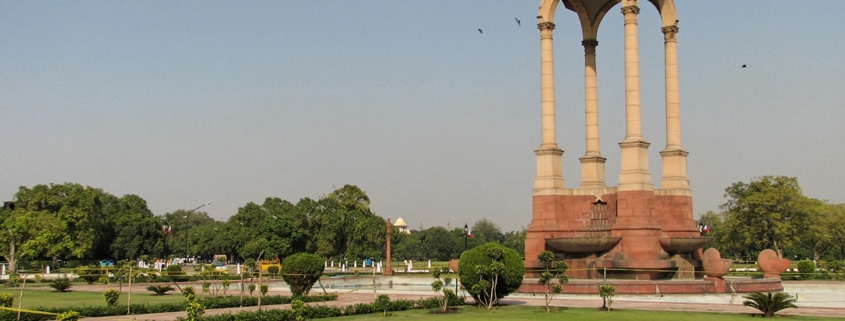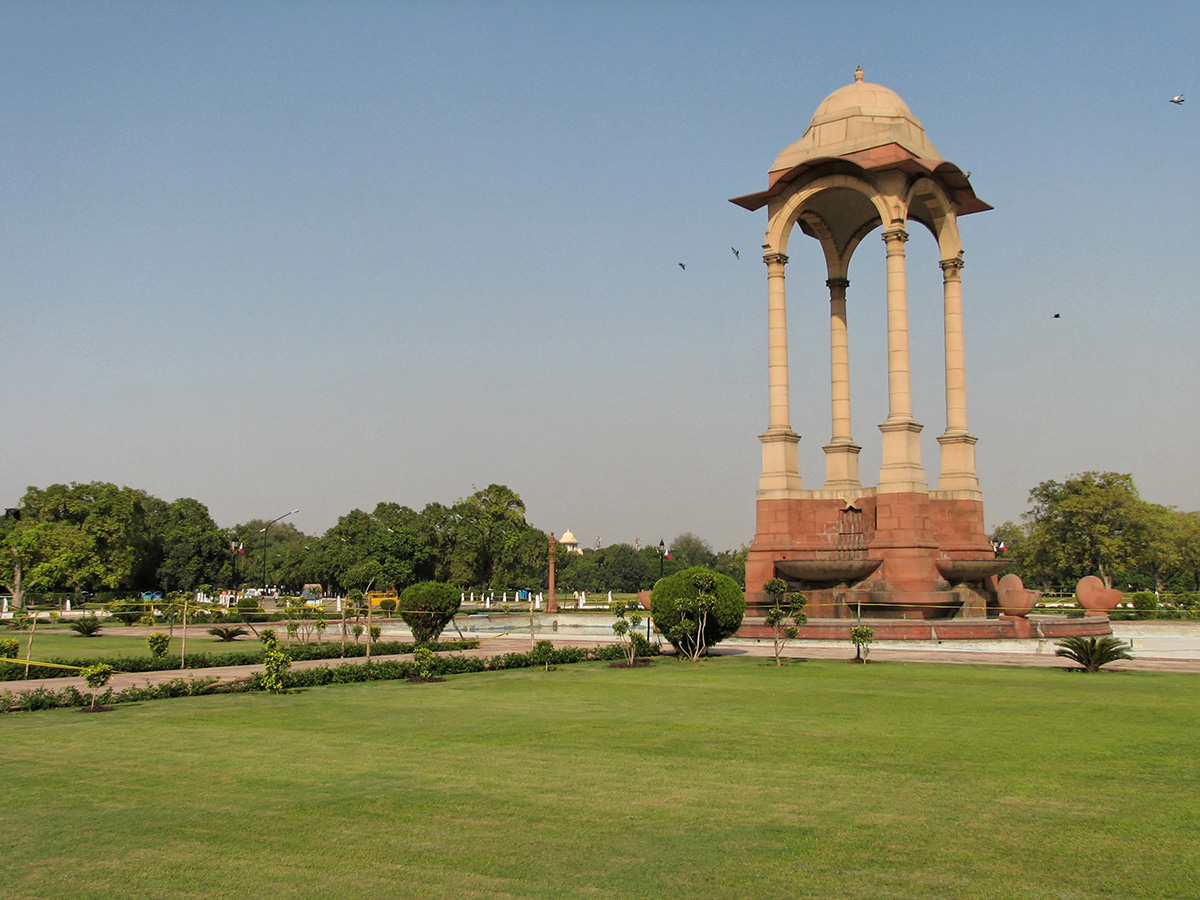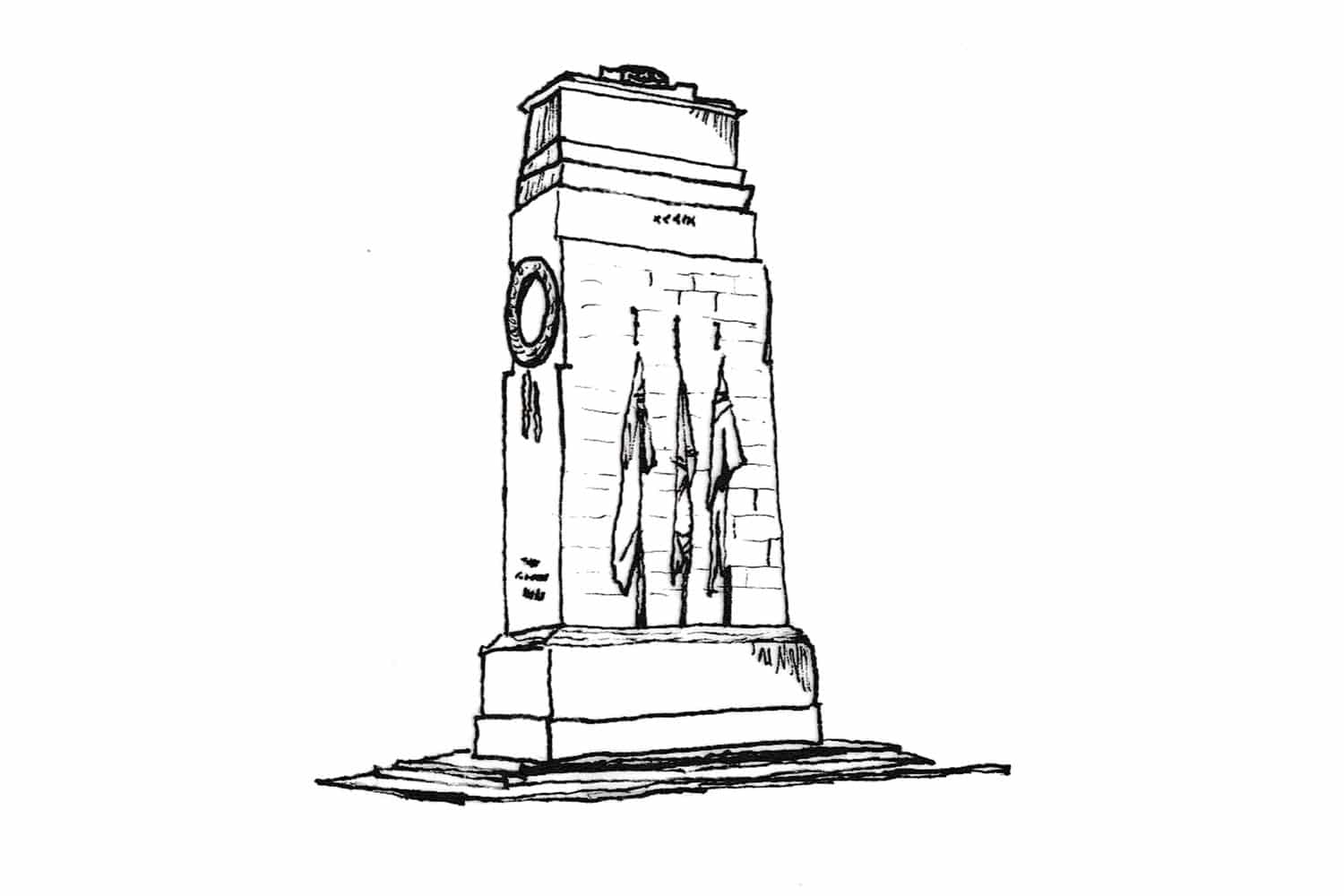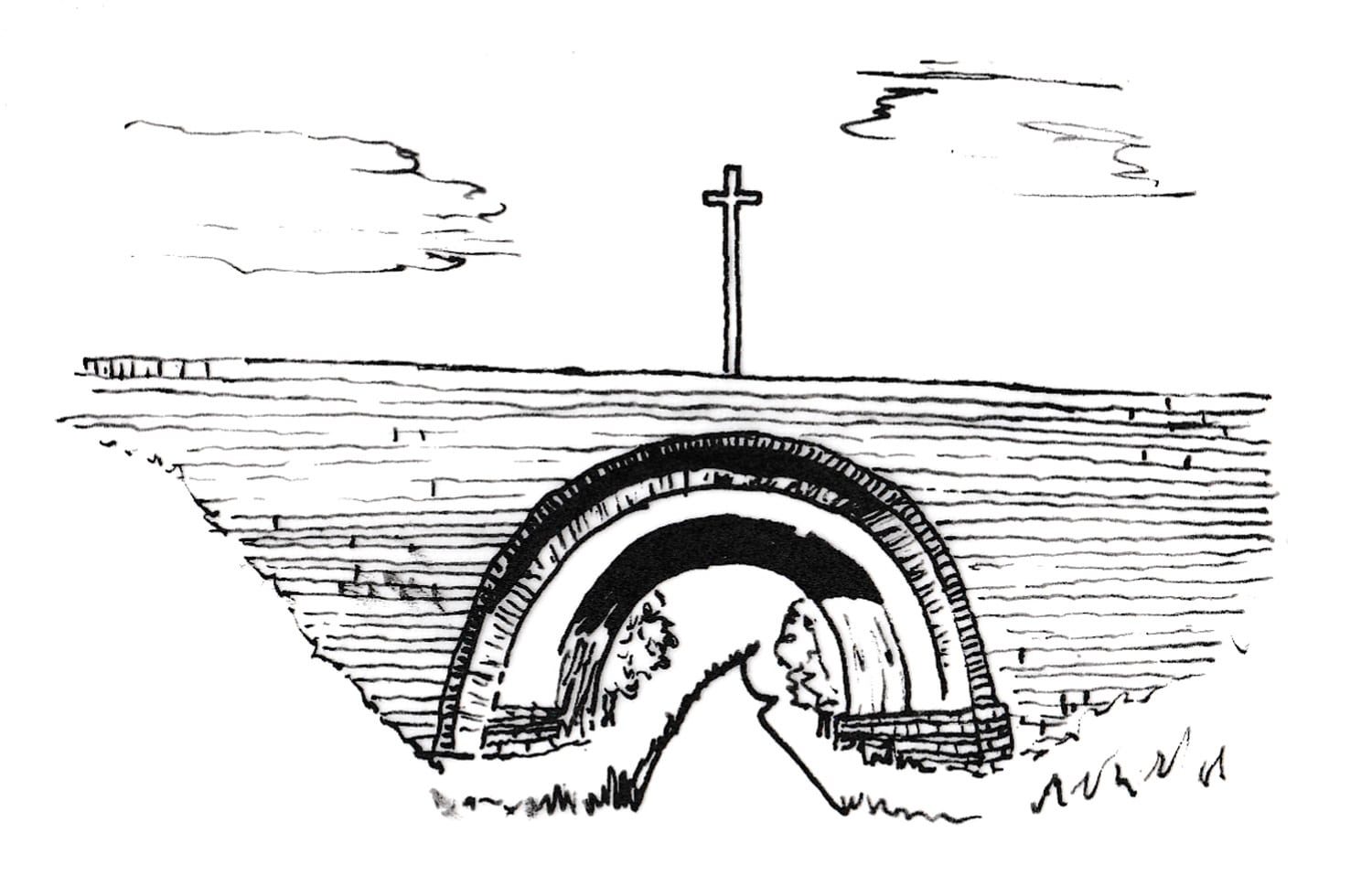
Description
The King George V Memorial was designed, in collaboration with the sculptor, Charles Sargeant Jagger (1885-1934) while Lutyens was still officially associated with New Delhi, but it was not erected until 1936-1938. Reflecting the importance of the King-Emperor in the history of the city, the monument was sited at the centre of the Princes Place, east of the War Memorial Arch, where six roads meet. The domed canopy, with its chujja is supported on four columns of the Delhi Order, which stand on a cleverly modelled base, designed for water to flow first into the circular pool and then, through the flanking stone shells on its brim, into the rectangular pool in which the Memorial stands. The canopy, of cream and red stone, stood over a white marble statue, which was removed in 1951. The statue was remarkable, for architecture and sculpture were fused. The figure of the King was comparatively small, but his robes became part of the tall pedestal, modelled with both set-backs and batter. (Amery et al, 1981, Cat no. 429)Bibliography
Amery, C., Richardson, M. and Stamp, G., (1981) Lutyens, the Work of the English Architect Sir Edwin Lutyens (1869-1944): Hayward Gallery London, 18 November 1981 – 31 January 1982. London: Arts Council of Great Britain.Also Cited In
Butler, A., 1950. The architecture of Sir Edwin Lutyens: the Lutyens memorial series. Vol III: Town and Public Buildings: Memorials: The Metropolitan Cathedral, Liverpool, Country Life: London and Scibners: New York.Listing Grade
Coming soonListing Reference
Client



